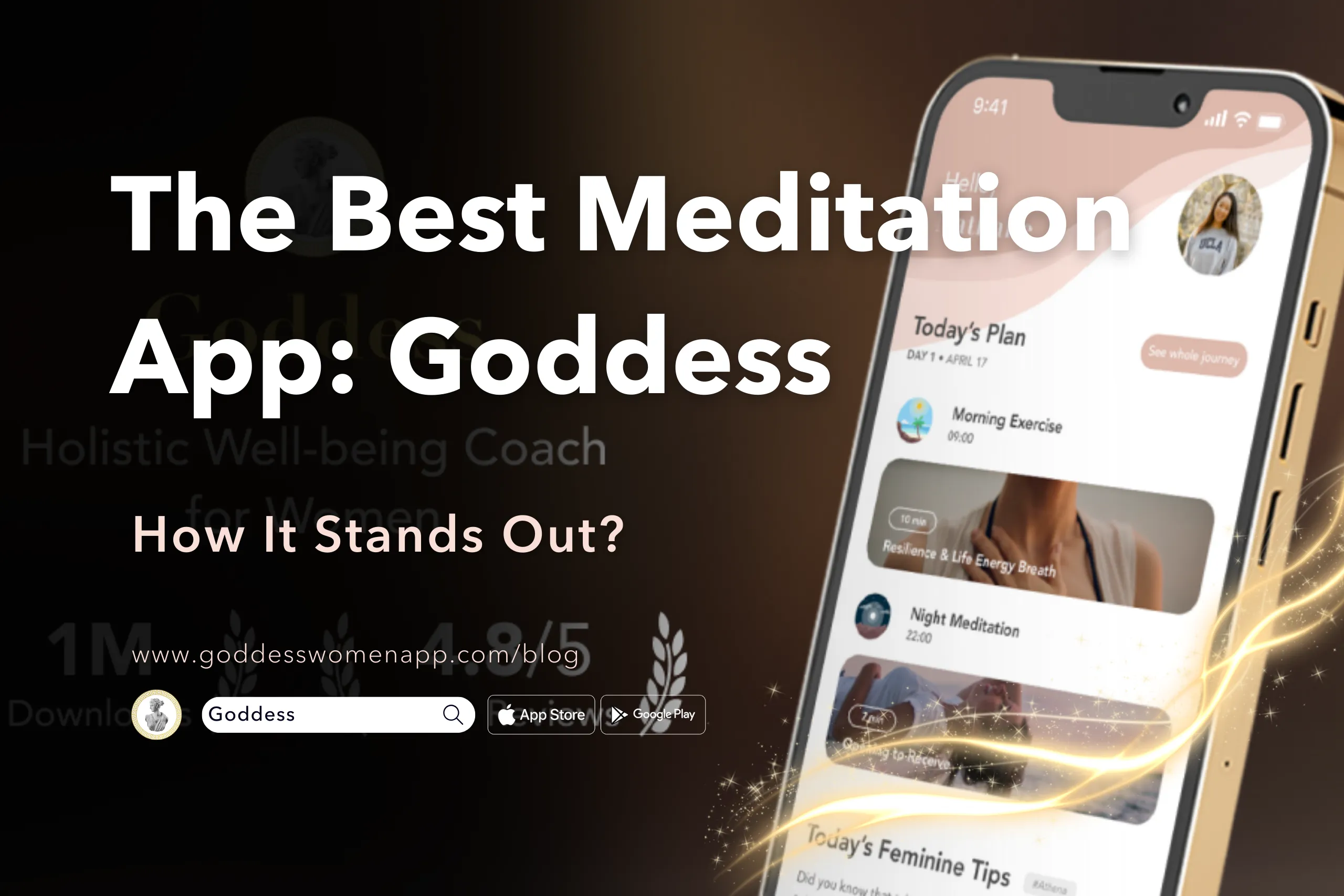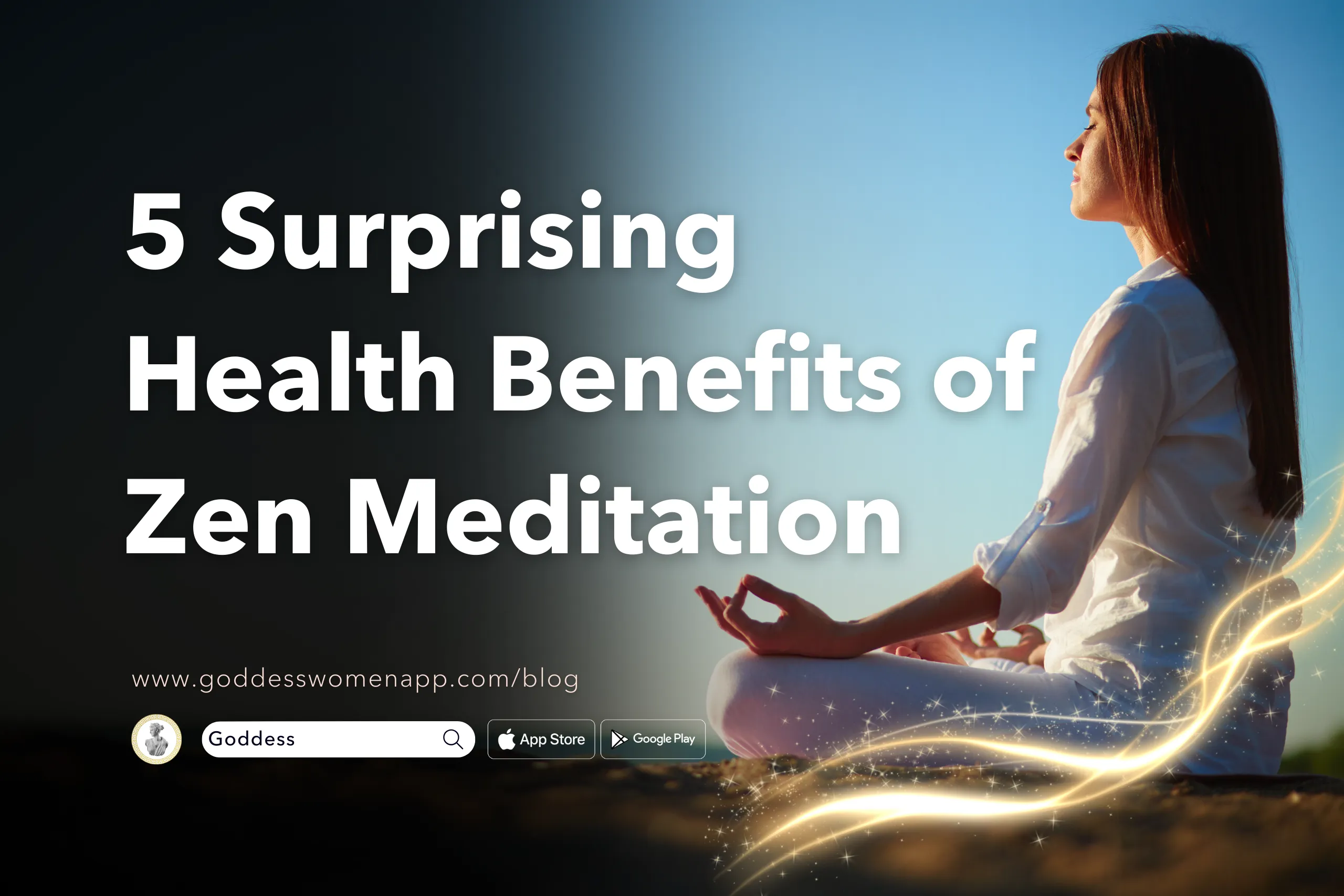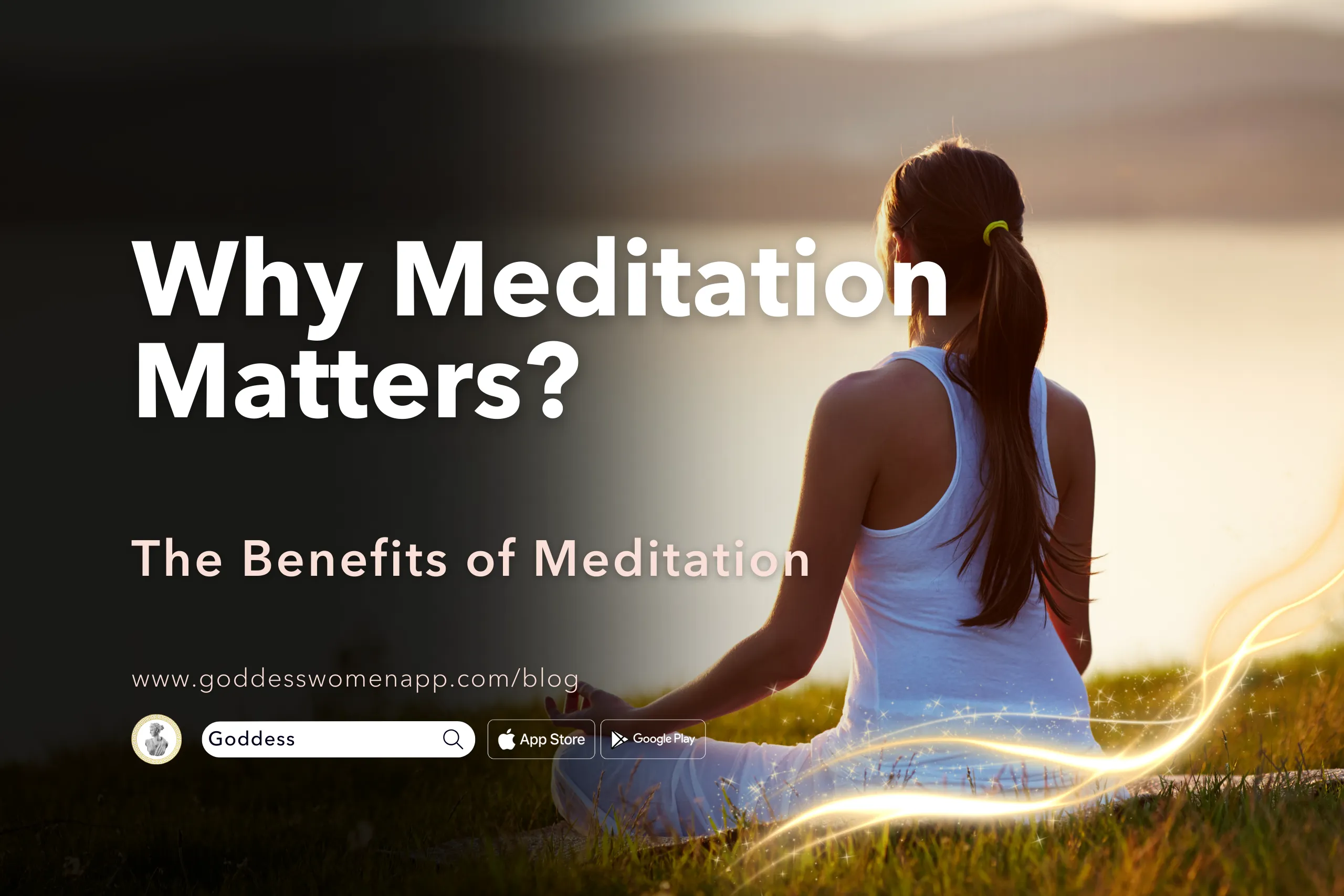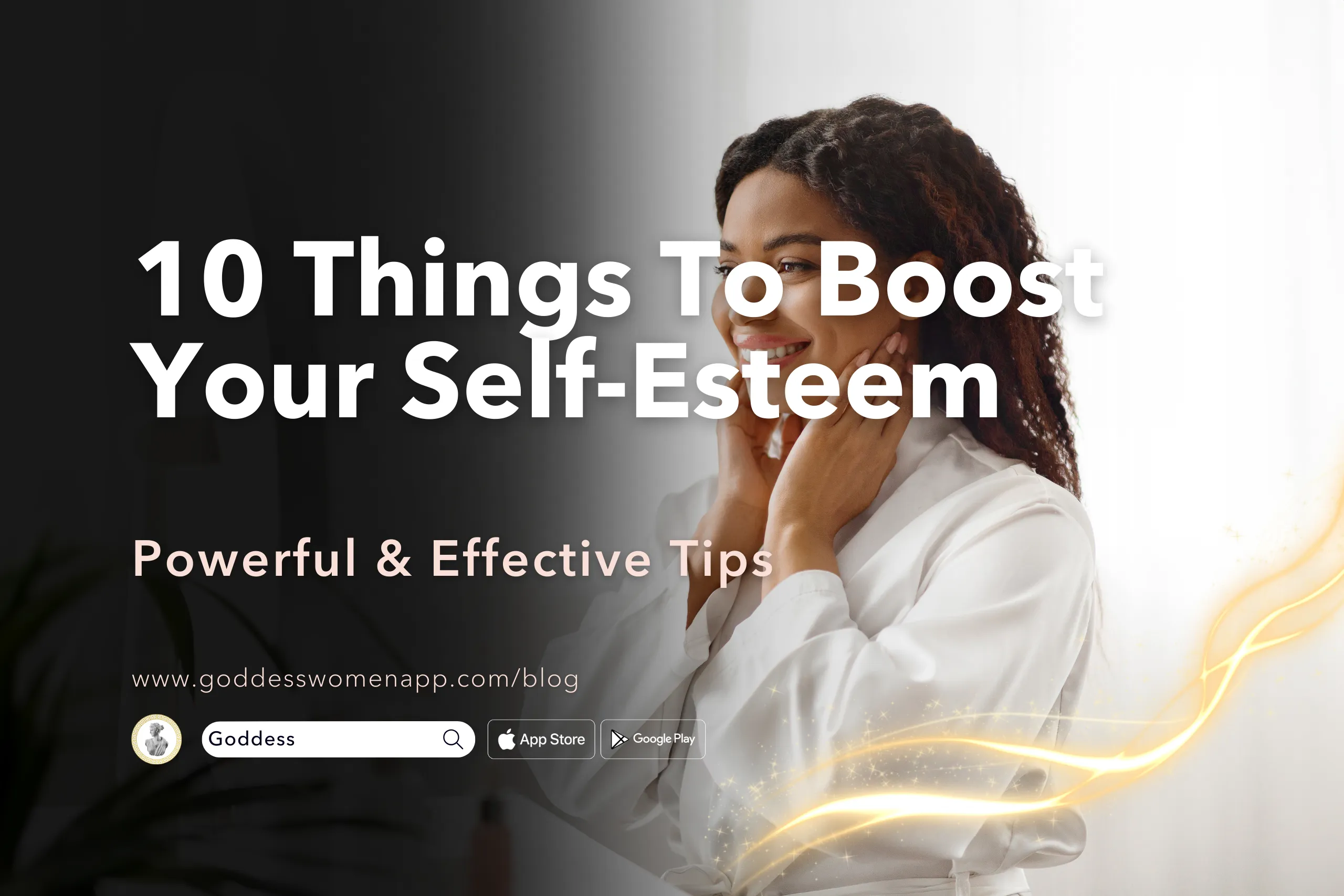Table of Contents
Introduction
Meditation, a practice as rich in variety as it is in history, offers profound benefits for mental and physical health. In our fast-paced modern life, uncovering the type of meditation that best suits your needs is key to achieving balance and tranquility. This guide delves into the diverse world of meditation, guiding you towards finding the type of meditation that resonates with your unique self.
From the calming practice of mindfulness to the profound depths of transcendental meditation, each type of meditation comes with its own set of unique benefits and methodologies. Whether you are a beginner eager to embark on your meditation journey or an experienced meditator seeking to explore further, this guide is designed to provide you with a comprehensive overview of the various types of meditation available.
Understanding the Basics of Meditation
Before diving into the different types of meditation, it’s essential to grasp the basic concept and history of this age-old practice. Meditation, in its simplest form, is the practice of training your mind to focus and redirect thoughts. Historically rooted in spiritual traditions, meditation has evolved over centuries, now encompassing a wide range of techniques and purposes, from religious contemplation to stress reduction and self-improvement.
At its core, meditation involves a deliberate and conscious effort to focus the mind, often by concentrating on a specific thought, object, or activity. This focus helps in calming the mind, reducing stress, and enhancing overall well-being. The beauty of meditation lies in its flexibility; there is no one-size-fits-all approach, allowing each individual to explore the type of meditation that best aligns with their personal goals and lifestyle.
Mindfulness Meditation: A Popular Type of Meditation
Mindfulness meditation, one of the most popular types of meditation in Western culture, is rooted in the Buddhist tradition but has gained widespread popularity due to its simplicity and effectiveness. This type of meditation involves paying attention to your thoughts as they pass through your mind without judgment. The goal is not to get involved with the thoughts or to judge them, but simply to be aware of each mental note as it arises.
Practicing mindfulness meditation involves sitting silently and paying attention to the thoughts, sounds, and sensations of your breathing or parts of your body. It’s about noticing the world around you without reaction, just observation. This type of meditation can be done anywhere and is particularly effective in reducing stress, anxiety, and negative emotions. It encourages practitioners to observe wandering thoughts as they drift through the mind, providing a sense of calm, balance, and enhanced focus.

Transcendental Meditation: A Unique Type of Meditation
Transcendental Meditation (TM) stands out as a unique type of meditation, known for its simplicity and depth. Developed by Maharishi Mahesh Yogi in the mid-20th century, this form of meditation involves silently repeating a mantra—a word or sound—to settle the mind into a state of profound rest and relaxation. Unlike mindfulness, TM doesn’t involve concentration or contemplation, making it distinct in the meditation landscape.
The practice typically lasts for 20 minutes and is done twice a day. One of the hallmarks of Transcendental Meditation is its personalized approach; practitioners receive their mantra from a certified teacher, ensuring it resonates with their being. Studies have shown that TM can reduce stress, anxiety, and improve cognitive functioning and cardiovascular health. This type of meditation is ideal for those who seek a structured practice with a touch of personalization.
Guided Meditation: An Accessible Type of Meditation
Guided meditation, as the name suggests, involves being guided by a narrator or teacher through a meditative experience. This type of meditation is perfect for beginners or those who find it challenging to direct their own thoughts in meditation. The guidance can be delivered through a live session, audio recording, app, or video, making it highly accessible to a wide audience.
In a guided meditation session, you’ll be led through a series of relaxing visualizations or instructions. These might include focusing on your breath, visualizing peaceful landscapes, or body scanning techniques to relax each part of your body. This type of meditation is highly versatile, with sessions tailored for specific outcomes like stress relief, sleep improvement, or personal growth. The structured and easy-to-follow nature of guided meditation makes it a popular type of meditation for those seeking a straightforward path to relaxation and mindfulness.
Vipassana Meditation: An Insightful Type of Meditation
Vipassana, also known as Insight Meditation, is a traditional Buddhist practice that focuses on cultivating a deep, clear, non-judgmental awareness of the present moment. It is one of the oldest types of meditation, with a history that dates back over 2,500 years. The practice involves observing the body and mind with an attentive, continuous awareness, allowing practitioners to see the true nature of reality.
A typical Vipassana meditation session involves focusing on the breath and the sensations in the body, observing them without attachment or aversion. The goal is to understand the impermanence of all things, which leads to a decrease in suffering and an increase in inner peace. Vipassana is often taught in 10-day retreats, where silence is maintained throughout to deepen the practice. This type of meditation is ideal for those who are looking to explore a more profound, introspective path and are willing to engage in longer periods of meditation.
Loving-Kindness Meditation: A Compassionate Type of Meditation
Loving-Kindness Meditation, also known as Metta Meditation, is a heart-centered type of meditation that cultivates an attitude of love and kindness toward oneself and others. It has its roots in Buddhist traditions but has gained global popularity due to its universal appeal and profound benefits. This practice involves silently repeating phrases of goodwill and kindness, such as “May I be happy, may I be healthy, may I be safe.”
The progression of this meditation is systematic. After directing kindness towards oneself, practitioners extend these wishes to a close friend, then to a neutral person, followed by someone with whom they have difficulty, and finally to all sentient beings. This practice can significantly increase one’s capacity for forgiveness and connection, promoting feelings of compassion and empathy towards others. Regular practice of Loving-Kindness Meditation has been shown to reduce social anxiety, improve interpersonal relationships, and even boost overall mental health.
Zen Meditation (Zazen): A Disciplined Type of Meditation
Zen Meditation, or Zazen, is a cornerstone of Zen Buddhism, emphasizing rigorous self-restraint, meditation-practice, insight into the nature of things, and the personal expression of this insight in daily life, especially for the benefit of others. Zazen is less about achieving a mental state and more about a discipline that brings insight into the nature of existence. It involves sitting in a quiet room, maintaining a correct posture, and focusing on one’s breathing.
The practice of Zazen is deceptively simple but can be profoundly deep. Practitioners are encouraged to observe their thoughts without attachment, letting them arise and pass without judgment or involvement. This type of meditation is known for its ability to foster a deep sense of calm and presence, bringing practitioners closer to a state of Zen, or enlightened awareness. Zazen is not only a meditation technique but a way of life, influencing how one interacts with their surroundings and other beings.

Yoga Meditation: A Holistic Type of Meditation
Yoga Meditation, deeply ingrained in the ancient Indian philosophy of Yoga, is a holistic type of meditation that integrates physical postures, breathing exercises, and meditative focus. It transcends the practice of yoga as mere physical exercise, delving into the spiritual and mental aspects of yogic philosophy. This type of meditation is about harmonizing the body with the mind and breath through the means of various breathing exercises, yoga poses, and meditation techniques.
In Yoga Meditation, the meditative practice begins with the physical to prepare the body for stillness, making it easier to sit in meditation without discomfort. The focus then shifts to breathing exercises (Pranayama) to regulate the flow of energy throughout the body. Finally, meditation techniques such as focusing on a mantra or visualizations are introduced. This practice is known for its ability to reduce stress, improve concentration, and promote a general sense of well-being. It’s an ideal type of meditation for those who seek a more active form of meditation or want to incorporate a more comprehensive spiritual practice into their daily life.
Chakra Meditation: A Vibrant Type of Meditation
Chakra Meditation is a type of meditation that focuses on the seven chakras, or energy centers, within the body. Originating from ancient Indian spiritual traditions, this meditation practice aims to balance and harmonize the body’s energy centers. Each chakra corresponds to specific physical, emotional, and spiritual aspects of our being, and through Chakra Meditation, practitioners seek to unblock and balance these energy points.
During Chakra Meditation, you typically sit in a quiet place and focus your attention sequentially on each chakra, starting from the root chakra at the base of the spine and moving up to the crown chakra at the top of the head. This meditation often involves visualization techniques, such as imagining a specific color associated with each chakra or silently repeating affirmations. Regular practice can lead to increased self-awareness, emotional balance, and a sense of inner peace.
Kundalini Yoga: An Energizing Type of Meditation
Kundalini Yoga, often referred to as the “yoga of awareness,” combines meditation, mantra, physical exercises, and breathing techniques to awaken the Kundalini energy at the base of the spine. This type of meditation aims to cultivate the creative spiritual potential of a person to uphold values, speak truth, and focus on the compassion and consciousness needed to serve and heal others.
The practice includes specific, sequential sets of movements, chants, and breathing exercises. It’s known for its ability to accelerate spiritual growth and healing, offering a fast and effective way to clear the mind, energize the body, and uplift the spirit. Kundalini Yoga meditation can be particularly powerful for those seeking a more dynamic and transformative type of meditation.
Mantra Meditation: A Focused Type of Meditation
Mantra Meditation involves the repetitive chanting of a word or phrase to keep the mind focused and away from distractions. This type of meditation is rooted in many religious traditions, including Hinduism and Buddhism. The mantra can be spoken loudly, whispered, or repeated silently in the mind, serving as a vehicle to deeper states of awareness.
The repetition of the mantra is a means to help the practitioner withdraw from random thoughts and external stimuli, leading to a state of focused calm. Some of the most common mantras include traditional Sanskrit phrases like “Om Mani Padme Hum” in Buddhism or “Om Namah Shivaya” in Hinduism. This type of meditation is ideal for those who seek a simple yet profound way to quiet the mind and delve into deeper dimensions of consciousness.
Breath Awareness Meditation: A Calming Type of Meditation
Breath Awareness Meditation is a simple yet profound type of meditation that focuses on the natural process of breathing. This practice involves paying close attention to the rhythm and sensations of your breath, noticing each inhale and exhale without trying to change or regulate it in any way. This mindfulness of breathing helps to anchor the mind in the present moment and cultivates a sense of inner peace and stillness.
This type of meditation is particularly beneficial for reducing anxiety, improving concentration, and fostering a deeper sense of emotional well-being. It’s a foundational practice in many meditation traditions and is often recommended for beginners due to its simplicity and effectiveness. Breath Awareness Meditation can be practiced anywhere and anytime, making it a versatile tool for anyone looking to start their meditation journey.

Progressive Relaxation: A Restorative Type of Meditation
Progressive Relaxation, also known as Body Scan Meditation, is a type of meditation that promotes deep relaxation and tension release. In this practice, you focus your attention on different parts of your body, often starting at the feet and moving upwards, consciously relaxing each body part one at a time. This methodical approach helps to identify areas of tension and encourages a deep state of relaxation.
This type of meditation is particularly useful for those who experience physical stress or have trouble relaxing. It’s also an excellent practice for improving sleep quality, as it relaxes the body and calms the mind. Progressive Relaxation can be guided or done independently and is a great way to unwind and decompress after a long day.
Visualization Meditation: A Creative Type of Meditation
Visualization Meditation is a dynamic type of meditation that involves engaging the imagination to create peaceful and positive mental images. This practice can take many forms, from visualizing a serene landscape to imagining oneself succeeding in future endeavors. The key is to use the power of visualization to evoke feelings of relaxation, confidence, or wellbeing.
This type of meditation is especially beneficial for those who are visually inclined and find peace in imagery. It’s a powerful tool for stress relief, improving focus, and fostering a positive mindset. Visualization Meditation is also used in various therapeutic settings to enhance mental and emotional health. Whether you’re visualizing a tranquil beach or a blooming garden, this practice allows you to take a mental retreat and recharge your mind.
Qi Gong: An Energetic Type of Meditation
Qi Gong is a traditional Chinese meditative practice that combines meditation, controlled breathing, and gentle movements. This type of meditation focuses on cultivating and balancing the ‘Qi’ or ‘life energy’ that flows through the body. Qi Gong involves rhythmic movements, a calm meditative state, and deep abdominal breathing to promote physical, mental, and spiritual well-being.
This practice is not just a spiritual exercise; it also has physical benefits, like improving flexibility, balance, and heart health. Qi Gong is especially appealing to those who are looking for a more active form of meditation. It’s an excellent choice for anyone interested in a holistic approach to health, integrating the mind, body, and spirit.
Mindfulness-Based Stress Reduction (MBSR): A Therapeutic Type of Meditation
Mindfulness-Based Stress Reduction (MBSR) is a structured program that uses mindfulness meditation to alleviate suffering associated with physical, psychosomatic, and psychiatric disorders. Developed by Dr. Jon Kabat-Zinn in the 1970s, MBSR combines mindfulness meditation and yoga to address the unconscious thoughts, feelings, and behaviors thought to increase stress and undermine health.
This type of meditation is typically taught in an eight-week program, where participants meet weekly for guided meditation, yoga, and group discussions. MBSR is highly effective in reducing stress, anxiety, and chronic pain. It’s a practical type of meditation for those who are dealing with health-related stress or seeking a structured approach to mindfulness practice.
Christian Meditation: A Devotional Type of Meditation
Christian Meditation is a form of prayer in which a structured attempt is made to become aware of and reflect upon the revelations of God. The word meditation comes from the Latin word meditari, which means to concentrate. Christian meditation is often practiced with the intent to understand the biblical passages and is focused on the beliefs and teachings of Jesus Christ.
In Christian Meditation, practitioners often use passages from the Bible or Christian devotional materials as the focal point for their meditation. The practice might involve contemplation on a certain scripture, silent prayer, or the repetition of phrases such as the Jesus Prayer. This type of meditation is ideal for those who wish to deepen their understanding and connection with their Christian faith.





